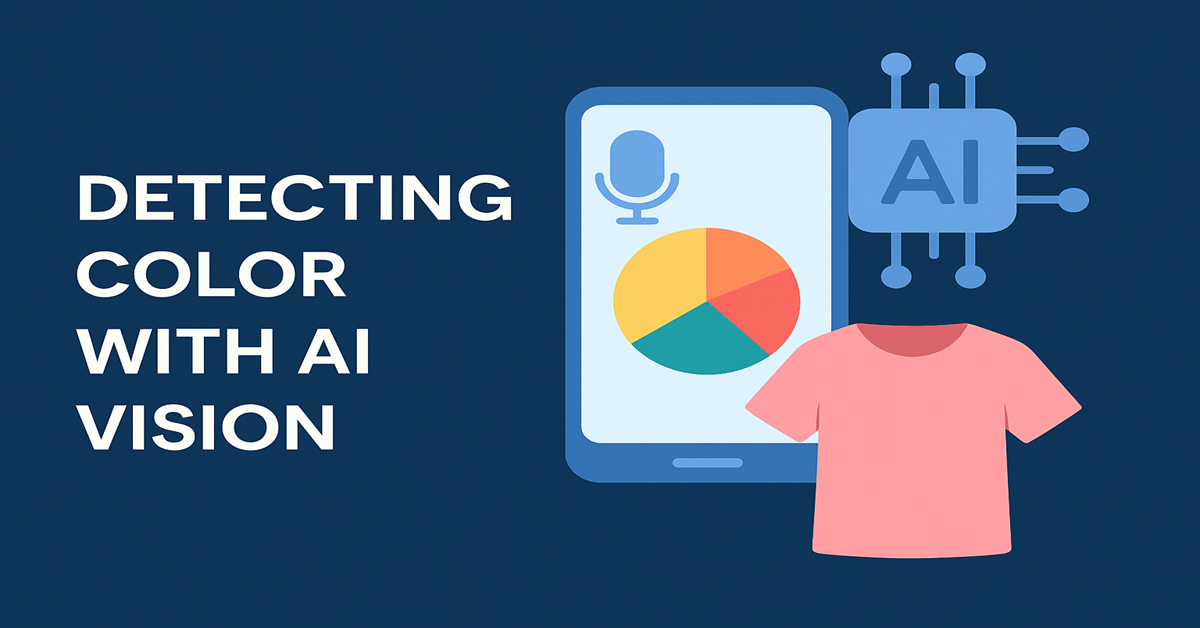Color used to feel out of reach for people who are blind or visually impaired. That’s changing fast. AI tools are now helping users understand not just color names—but tone, style, and even fabric patterns.
Whether you’re picking clothes or decorating your space, these tools make color practical. I’ve tested many myself. The difference they make? It’s nothing short of eye-opening.
Why Color Is Still a Big Deal
Color isn’t only visual. It shows up in everyday decisions:
– What to wear to work or an event
– Whether fruit is ripe
– Matching clothing or accessories
– Home organization and design
– Understanding visual cues or emotions
In the past, I asked others for help with color. Sometimes it worked, sometimes… not so much. With AI, I feel more confident making color choices on my own.
I once wore a bright pink shirt with brown trousers to a big office function, completely sure it was my go-to ocean blue. I felt confident walking in—until I sensed people whispering that my outfit didn’t quite match. That’s when it hit me: I’d picked the wrong shirt. I wished I had a way to confirm colors on my own.
I Personally Tested ChatGPT and Gemini for Color Detection
To truly understand what works, I tested both ChatGPT and Google Gemini myself—using actual photos I took of my clothes, furniture, and even toys. These weren’t stock images or staged scenes. They were real-life situations from my daily routine where I needed to understand color. Each description provided by the AI was validated by a sighted person who assisted me throughout the experiment, helping ensure what I heard matched what was actually seen.
My teal sofa was a good start. People often call it green or blue. The AI called it “rich teal with subtle green undertones.” Spot on.
Next, a floral cloth. The AI described: “soft pink petals with a faint gold outline on off-white fabric.” Not just accurate—beautiful.
Then came a tricky one: a cream shirt with faint lavender-grey stripes. Even sighted friends squint at it. The AI nailed it with “semi-formal style with pastel detailing.” That kind of feedback makes a real difference when you’re trying to dress smart.
Even a toy car got a clear read: “bright Red plastic body with black wheels and a yellow stripe across the side.” Honestly, I screamed with excitement when I heard that.
Best Performer: ChatGPT with Image Input
Most people know ChatGPT for text. But with images, it really shines.
I uploaded photos and asked questions. The answers were clear and surprisingly thoughtful. Other apps just say “blue” or “green.” ChatGPT? It goes beyond naming colors—it picks up on subtle patterns, tone, and even gives style context.
Example:
Prompt: What’s the main color and pattern here?
Response: “Cream base with fine lavender-grey stripes, vertically aligned. Fabric appears to be soft cotton—semi-formal wear.”
That’s not just helpful—it’s empowering.
Gemini: Surprisingly Capable and Fast
Google’s Gemini also lets you upload photos and works especially well for Android users. While it’s known for its speed, I was impressed by the accuracy too. For example, it described the cream-striped shirt as “a light-colored shirt with blue lines.” That may sound simple, but it’s exactly how a friend once described it to me. It captured the main color and pattern without missing the point. The feedback is direct, quick, and useful—especially when you’re in a rush.
Gemini holds its own, especially for fast decisions. It may not go into deep fashion analysis, but it gets the job done. In fact, I found it almost as reliable as ChatGPT in many casual situations.
Helpful Color-Detecting Apps for people with vision loss
These apps can help with color too:
– Be My Eyes – Uses volunteers and AI to describe scenes
– TapTapSee – Takes a photo, reads the result out loud
– Color ID / Color Inspector – Says color names in real-time
– Envision – Great for detailed reads in a full-featured app
– Google Lookout – Works well, though results depend on lighting
They all respond a bit differently, and some are more helpful than others depending on where you are or what you’re trying to do.
How to Get the Best Results
Want better results from these tools? Here’s what’s worked for me:
– Use natural light when possible
– Avoid busy backgrounds
– Keep the item centered
– Zoom in a little if it helps
– Ask specific questions like: “What’s the pattern and tone?”
– Try a second tool to confirm
Basically, treat your photo like a visual question. Clearer inputs bring clearer answers.
Final Thoughts
Color is more than what you see. It’s how you feel. It shapes how we show up in the world—and how we’re remembered.
With AI, blind users don’t have to guess anymore.
ChatGPT and Gemini brings nuance. Other tools add value. Together, they’re giving us more freedom, more creativity, and yes—a better wardrobe.

